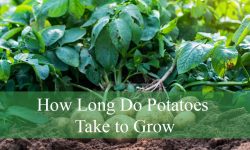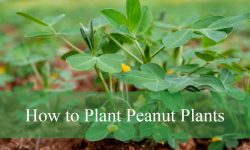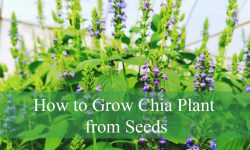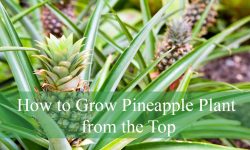Peanut plants (Arachis hypogaea), also known as goobers, are fascinating members of the Fabaceae family, related to beans and peas. Though commonly mistaken for nuts, peanuts are actually underground seeds of a tropical legume, with a unique growing process.
In this guide, we’ll cover the essential aspects of peanut plant care, from planting and growing conditions to harvesting and pest control. With these ultimate tips, you’ll be ready to grow a healthy and bountiful peanut crop.
Peanut Plant Basics
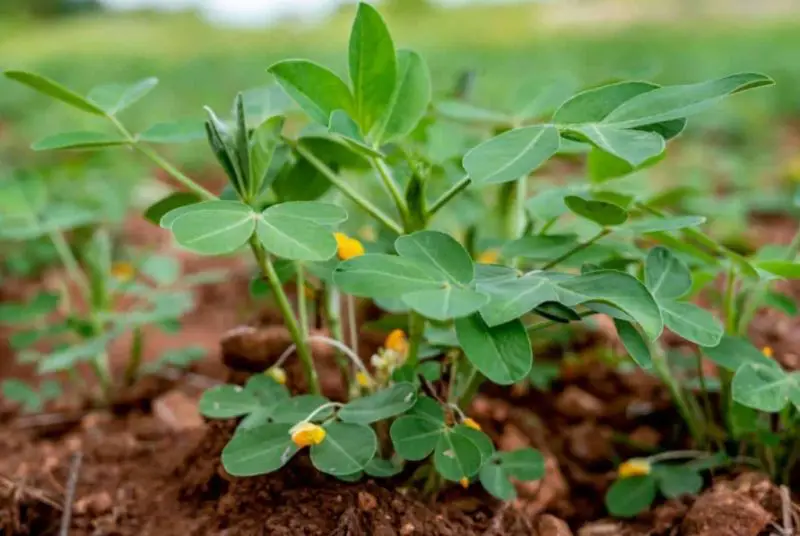
Peanuts have a one-of-a-kind growth pattern. Their yellow flowers bloom above ground, but the fruits (the actual peanut clusters) form below ground, developing at the ends of live shoots called “pegs” that push down into the soil. Peanut plants are annuals, typically growing about 1–2 feet tall and spreading up to 3 feet wide. They require a long growing season—usually around 120–150 frost-free days—to reach maturity. Varieties like Valencia can mature in just 90–110 days, ideal for shorter growing seasons.
Plant Type: Annual
Sun Exposure: Full Sun
Soil Type: Well-drained, Sandy Loam
Soil pH: Slightly Acidic (6.0–6.5)
USDA Hardiness Zones: 2-11
How to Plant Peanuts
When to Plant
Peanut seeds thrive best when planted in the spring, typically around April or May. Timing is crucial to ensure a successful peanut crop, as peanuts need warm soil conditions for optimal germination and growth. Wait until after the last frost has passed, as even a light frost can damage young peanut plants and delay growth. Ideally, the soil temperature should reach at least 65–70°F (around 18–21°C) before planting. This temperature range supports fast and reliable germination, allowing the seeds to sprout and develop strong roots.
To measure soil temperature, use a soil thermometer inserted about 2–3 inches deep in the soil where you plan to plant. Checking the temperature over a few days helps ensure the soil has consistently warmed up, creating a stable environment for peanut seeds. In colder climates, consider starting peanuts indoors and transplanting them once the outdoor soil reaches the desired warmth. For warmer regions, planting can occur directly outdoors, but avoid planting too early, as cool soil may cause seeds to rot.
Selecting a Planting Site
Choosing the right planting site is essential for a successful peanut crop. Peanuts require full sun exposure, so select a location that receives at least 8 hours of direct sunlight each day. Sufficient sunlight encourages strong growth, as peanuts rely heavily on sunlight for energy to produce healthy foliage and develop underground pods.
The ideal soil type for peanuts is sandy loam, a loose, well-draining soil that allows the plants’ unique “pegs” to penetrate easily. Good drainage is vital, as peanuts don’t tolerate waterlogged conditions, which can lead to root rot and inhibit growth. If your soil is heavy clay, consider adding organic matter or sand to improve its structure. Alternatively, using raised beds filled with a well-balanced, loose potting mix can also provide the right conditions.
Avoid planting peanuts in locations where legumes—such as beans or peas—have grown in previous seasons. Legumes often leave behind pathogens that can spread diseases, and they consume similar soil nutrients, potentially depleting resources necessary for peanut plants.
Spacing, Depth, and Support
Proper spacing and depth are crucial when planting peanut seeds to ensure healthy growth and maximum yield. Start by planting seeds at a depth of 2 inches. This depth helps the seeds establish strong roots without struggling to break through the soil. After planting each seed, space them 4–6 inches apart within each row. This spacing allows each plant enough room to spread and develop without competing for nutrients.
For row spacing, leave about 3 feet between rows. This distance promotes good air circulation, which is essential for preventing mold and fungal diseases that can thrive in overly humid conditions. Proper airflow also allows sunlight to reach lower parts of the plants, supporting even growth.
Peanut plants are unique because they grow low to the ground and spread horizontally, sending out shoots known as “pegs” that penetrate the soil to form peanuts underground. Because of this spreading nature, peanuts do not require a support structure. Unlike climbing plants, they don’t need stakes or trellises, making them relatively low-maintenance in this aspect.
Essential Peanut Plant Care
Light Requirements
Peanut plants thrive in full sun conditions, needing a minimum of 8 hours of direct sunlight each day to reach their full growth potential. Sunlight is essential for photosynthesis, the process that allows plants to convert sunlight into energy, fueling all stages of growth from root development to pod formation. With ample sunlight, peanut plants develop sturdy stems and lush green leaves, creating a strong foundation for the formation of healthy, nutrient-rich peanuts.
Without adequate sunlight, peanuts may exhibit weak, spindly growth and produce fewer pods. Insufficient light can lead to smaller plants, pale leaves, and underdeveloped pegs (the shoots that penetrate the soil and form peanuts). Reduced sunlight also slows down the plant’s overall growth cycle, leading to delayed maturity and lower yields.
When choosing a location, avoid areas that may be shaded by buildings, trees, or other plants throughout the day. Placing peanuts in open, unobstructed areas ensures they receive the consistent, direct sunlight required for robust growth. In regions with intense heat, some light afternoon shade may prevent stress on the plants, but they should still receive the majority of their sunlight exposure during morning and midday.
Soil Conditions
Peanut plants perform best in loose, sandy, and well-drained soil. This type of soil provides an ideal structure for the plant’s unique growing habit, where “pegs” from the flowers penetrate the soil to form peanut pods underground. Well-drained soil prevents waterlogging, which is crucial as peanuts are sensitive to excess moisture that can lead to root rot and diseases. If your garden has heavy clay soil, consider amending it with sand or organic compost to improve drainage and loosen the structure.
Peanuts prefer slightly acidic soil, with an optimal pH range of 6.0 to 6.5. Soil that is too acidic or too alkaline can impede nutrient absorption, affecting growth and pod formation. You can test your soil’s pH using a home test kit and adjust it if necessary, with lime to raise pH or sulfur to lower it.
For best results, enrich the soil with calcium, as peanuts need calcium near the surface to develop strong, well-formed pods. Adding calcium in the form of gypsum or bone meal to the upper 6 inches of soil at planting time supports the formation of peanut pods. Avoid planting peanuts in the same area year after year to maintain soil health, as crop rotation helps prevent nutrient depletion and disease buildup.
Watering Needs
Peanut plants require consistent moisture, needing about 1 inch of water per week to thrive. Proper watering is especially crucial during two key stages: germination and peg formation. During germination, moisture helps the seeds sprout and establish strong roots, supporting the plant’s initial growth. After about 60 to 70 days, as the plants start to form “pegs” (the shoots that push into the soil and develop peanuts), maintaining consistent soil moisture ensures successful peg penetration and pod development.
As harvest approaches, reduce watering 10–14 days before harvest. This allows the soil to dry out, which is beneficial for mature peanut pods, as it hardens them slightly and prevents excess moisture that could lead to rot or mold during harvesting and curing.
For best results, use drip irrigation or a soaker hose. This method delivers water directly to the soil and root zone, minimizing water contact with the foliage. Wet foliage can create a humid environment ideal for diseases, so avoid overhead watering if possible. Keep the soil evenly moist but avoid waterlogging, which can lead to root rot and fungal issues.
Temperature and Humidity
Peanut plants thrive in warm temperatures, with the ideal range being 86–93°F (30–34°C). These warm conditions help support rapid growth and pod development, as peanuts are a tropical plant that requires heat to reach maturity. However, while they need warmth, extreme heat, especially above 95°F (35°C), can cause damage to the plants, particularly the flowers. High temperatures can cause flower drop or inhibit successful pollination, leading to a reduced yield. To protect against heat stress, ensure peanuts are well-watered during hot spells to help regulate their temperature and prevent flower damage.
Humidity plays a role in peanut growth, but it must be managed carefully. Peanuts grow best in slightly humid conditions, as moderate moisture in the air supports healthy leaf development and root growth. However, as the growing season nears its end, dry weather becomes crucial. Dry conditions in the final stages of growth help prevent moisture-related issues, such as mold or fungal diseases, which can affect the peanuts’ quality during harvest.
Maintaining a dry, warm environment in late summer encourages the pegs to mature and the pods to dry out, ensuring a successful harvest. Monitoring both temperature and humidity throughout the growing season is key to ensuring healthy peanut plants and a bountiful yield.
Fertilizing Peanuts
Peanuts are legumes, which means they have the unique ability to fix their own nitrogen in the soil. This process occurs when rhizobium bacteria present in the soil form a symbiotic relationship with the peanut plants’ roots. These bacteria convert atmospheric nitrogen into a form that the plants can use, reducing the need for additional nitrogen fertilizers. However, if you’re planting peanuts in an area where they’ve never been grown before, it’s advisable to add a peanut inoculant to the soil. This inoculant helps introduce the necessary rhizobium bacteria, ensuring successful nitrogen fixation and healthy plant growth.
While peanuts can produce their own nitrogen, it’s essential to avoid using excessive fertilizer, particularly nitrogen-rich types, as peanuts are prone to fertilizer burn. Over-fertilizing can harm the roots and hinder plant growth, leading to poor pod formation and reduced yields. It’s best to apply fertilizers sparingly and focus on other nutrients that peanuts need.
One essential nutrient for pod development is calcium. Peanuts require calcium in the upper 6 inches of soil, where the pods form. Bone meal is an excellent source of calcium and can be incorporated into the soil before planting. Adding bone meal ensures that the plants have the necessary calcium to develop strong, well-formed pods, contributing to a healthy harvest.
Pollination
Peanut plants are self-pollinating, meaning they do not rely on external pollinators such as bees, butterflies, or wind for fertilization. This unique characteristic simplifies the pollination process for peanut growers. About 40 days after planting, peanut plants begin to produce small, yellow flowers that appear at the base of the plant. These flowers are typically self-fertilizing, with pollen from the flower’s stamen fertilizing its own ovary.
Once the flowers are pollinated, the plant produces a special structure known as a peg. The peg is a small, stem-like growth that emerges from the fertilized flower. It grows downward, penetrating the soil where it begins to develop into a peanut pod. The soil acts as a protective environment for the developing pods, shielding them from harsh weather conditions and promoting the healthy growth of peanuts inside.
The ability of peanuts to self-pollinate and produce their own fruit without relying on outside pollinators is a key factor in their cultivation. It ensures that peanut plants can thrive even in regions where pollinator populations are low or inconsistent.
Peanut Varieties
There are four main types of peanut varieties, each with distinct growth characteristics and uses:
- Valencia Peanuts: Known for their fast maturation, taking 90–110 days, Valencia peanuts are ideal for home gardeners due to their quicker harvest time. They produce smaller kernels but are highly flavorful.
- Spanish Peanuts: These peanuts mature within 90–120 days and are widely used for candy and roasted peanuts. They are characterized by their reddish-brown skin and are smaller in size compared to other varieties.
- Virginia Peanuts: With a longer growing period of 130–150 days, Virginia peanuts are known for their large pods and high yield. They are often used to make peanut butter and are favored for their rich, nutty flavor.
- Runner Peanuts: Similar to Virginia peanuts in terms of growth time (130–150 days), Runner peanuts need more space to grow and are also primarily used for peanut butter production due to their consistent size and smooth texture.
How to Harvest Peanuts
In late summer or early fall, peanut plants will start showing signs of readiness for harvest:
- Yellowed foliage: This indicates that the peanuts are mature.
- Pod inspection: Gently pull a pod from the ground; mature peanuts have a darkened inside surface, veined texture, and colored seed coats.
To harvest:
- Dig or pull the entire plant from the ground, then gently shake off excess soil.
- Hang the plants in a warm, dry area with good air circulation for about one week.
- Cure and dry the peanuts by leaving them out for another week or two after removing them from the vines.
Growing Peanuts in Pots
If you’re limited on space, growing peanuts in pots is a great alternative. Choose a container that is 18–20 inches wide and deep to provide enough room for the plants to grow and for the pegs (the shoots that form peanuts) to penetrate the soil. Make sure the pot has drainage holes to prevent waterlogging, which can harm the roots.
Fill the container with a well-draining potting mix. This is essential because peanuts require loose, sandy soil for proper growth. Plant three seeds in the center of the pot, spacing them evenly. After planting, water the soil thoroughly, ensuring it remains consistently moist but not soaked. Over-watering can cause root rot, so it’s important to keep the soil evenly moist.
Place the pot in a location with full sun, as peanuts need at least 8 hours of direct sunlight per day to grow successfully. As the plants grow, thin them to the healthiest plant, leaving plenty of space for the peanuts to develop.
Common Pests and Diseases
Peanut plants, like all crops, are vulnerable to various pests and diseases that can harm growth and reduce yields. Here are some common threats and how to address them:
- Pests: Squirrels, mice, and chipmunks are known to steal developing peanuts from the soil. To protect your crop, use secured mesh row covers or fencing to deter these animals from digging up the plants. This will help ensure the peanuts are allowed to mature undisturbed.
- Leaf-feeding insects: Armyworms and caterpillars are common pests that feed on peanut plant leaves, causing damage and weakening the plant. If these pests are noticed, remove them manually or apply an organic insecticide to control their spread.
- Diseases: Peanuts are susceptible to several diseases, including leaf spot, rust, blight, and viral infections. These diseases can cause discoloration, wilting, and reduced pod formation. Regularly inspect the plants for any signs of disease, such as unusual spots on leaves or shriveled pods. For accurate identification and management, it’s helpful to consult with a local agricultural extension service. They can provide specific recommendations for disease control in your area.
Ultimate Tips for Growing Healthy Peanut Plants
Here are some ultimate tips to ensure successful peanut growth:
- Rotate crops yearly to prevent nutrient depletion and reduce disease risks.
- Mulch around the plants to help retain soil moisture, prevent weeds, and protect pegs.
- Avoid disturbing the soil once the pegs enter the ground to protect the developing peanuts.
- Plant with care: Only use untreated, raw peanuts, or purchase seeds specifically labeled for planting.
Following this Peanut Plant Care and Growing Guide with these ultimate tips will help you achieve a bountiful peanut harvest, whether you’re growing them in a garden plot or a pot. With patience and the right conditions, you can enjoy the rewards of fresh, homegrown peanuts.


